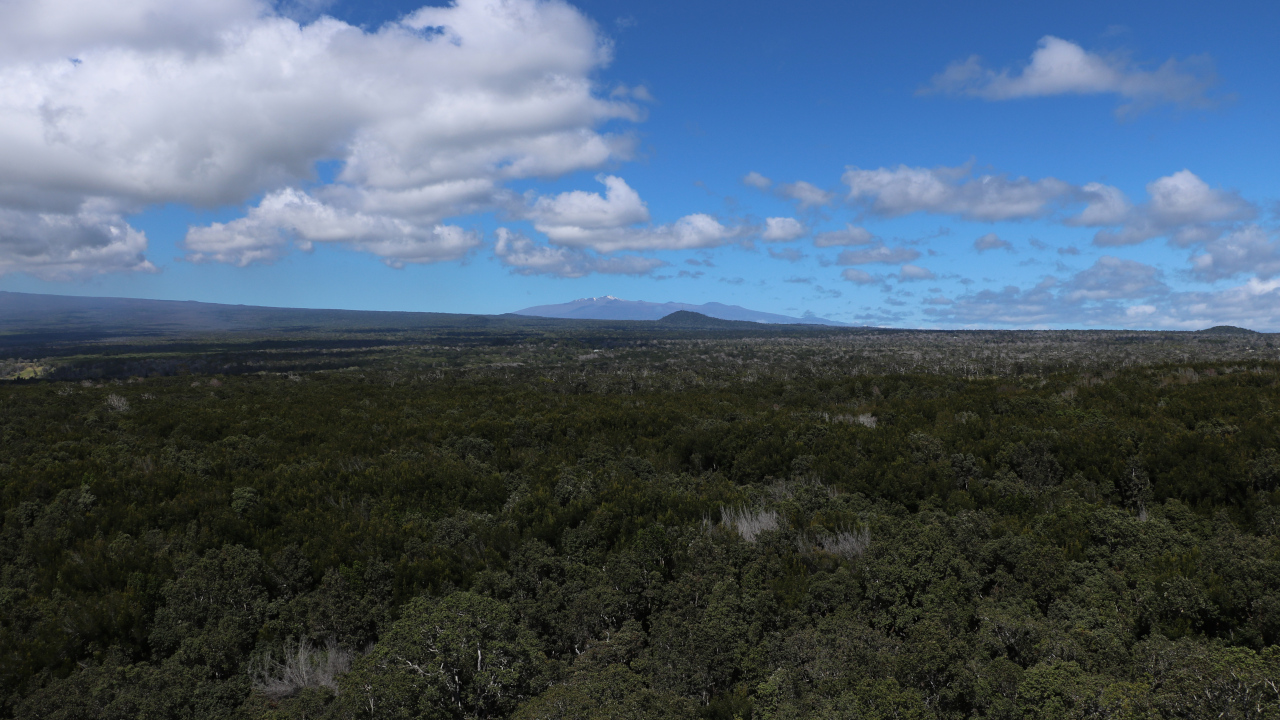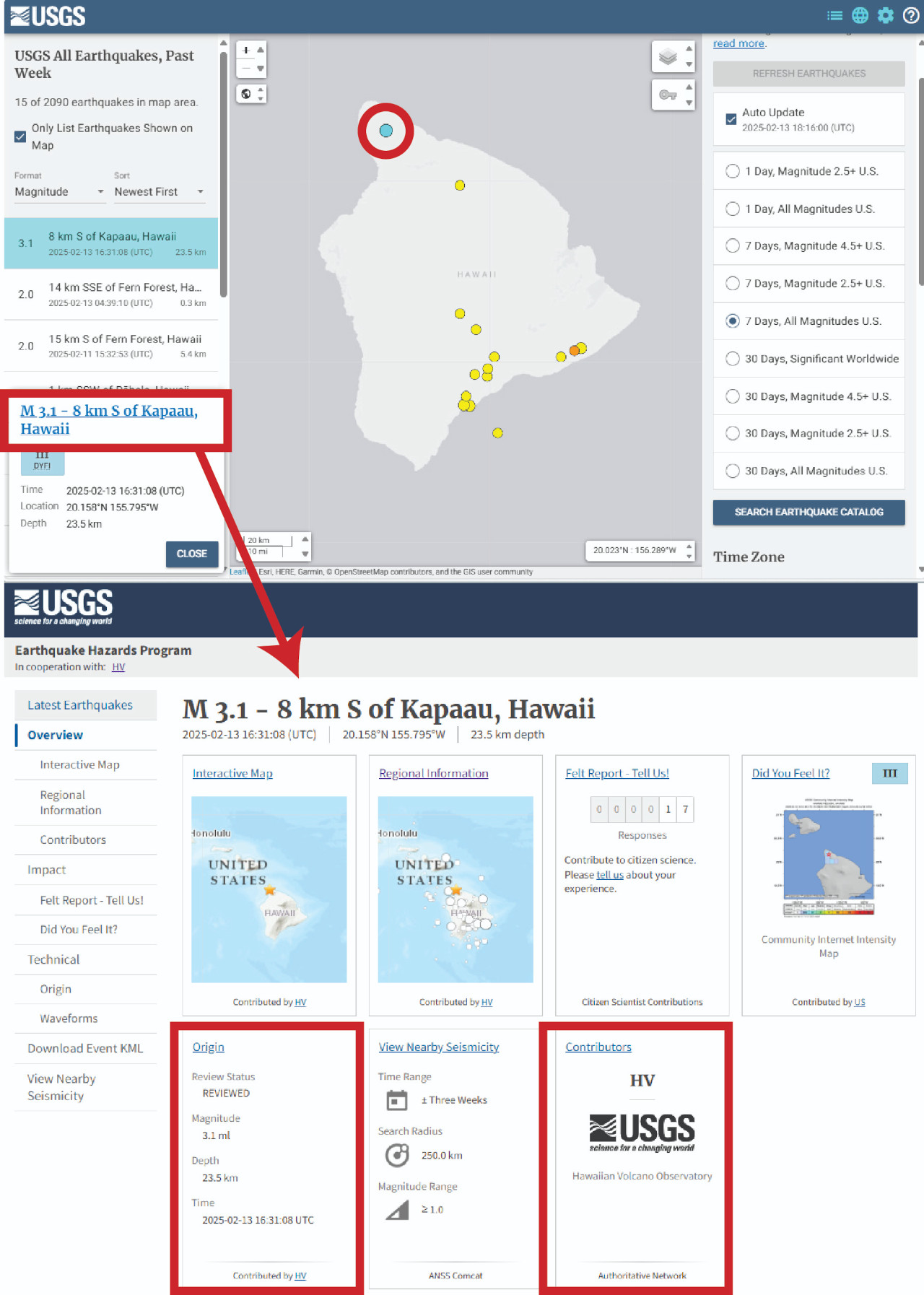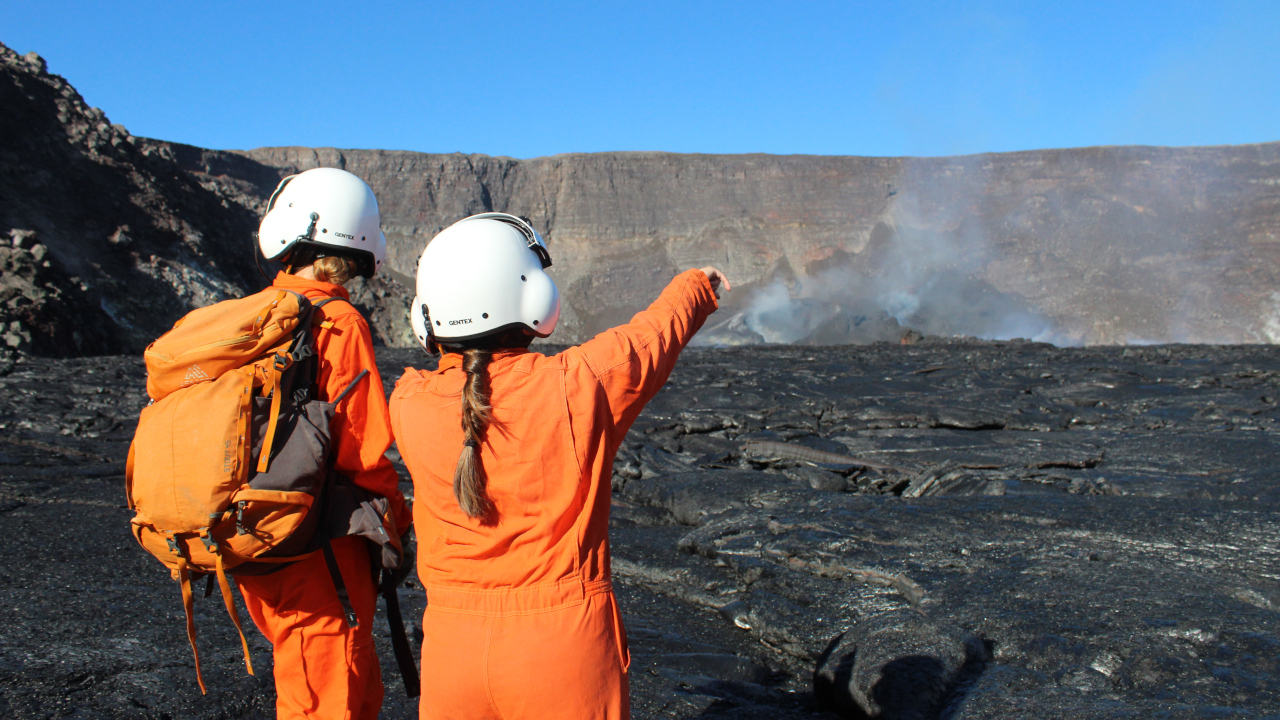(BIVN) – The ongoing summit eruption of Kīlauea remains paused, and scientists say another episode is likely to occur in the next 3 to 6 days, confined to the caldera within Hawaiʻi Volcanoes National Park.
The USGS Volcano Alert Level for Kīlauea remains at WATCH.
This week’s USGS Hawaiian Volcano Observatory Volcano Watch article is about earthquake alerts.
Today’s article is written by Research Corporation of the University of Hawaiʻi seismic analyst Maddie Hawk:
Earthquakes are a common occurrence in Hawaii. If you subscribe to emergency, earthquake, or volcano notifications, the shaking you feel might be followed by a message summarizing the earthquake. Have you ever wondered why the magnitude of an earthquake you felt might differ slightly between a message you received, a post you saw on social media, or what the local news reported?
When an earthquake strikes in Hawaii, there are three agencies that analyze the earthquake for its location and magnitude. The USGS National Earthquake Information Center (NEIC) serves as the repository of earthquake catalogs and a backup to the regional networks. The NOAA Pacific Tsunami Warning Center (PTWC) monitors for tsunamis and releases the earthquake’s automatically calculated information (location, magnitude) to the Hawaii County Civil Defense Agency within thirty seconds. The USGS Hawaiian Volcano Observatory (HVO) is the agency that releases the authoritative information after reviewing the event.

USGS: “Clear weather during a Kīlauea summit monitoring overflight allowed for views of Mauna Kea in the distance, with the slope of Mauna Loa’s Northeast Rift Zone visible on the left side of the image. Small amounts of snow from a recent storm remain visible on the slopes of Mauna Kea.” (USGS photo by P. Dotray)
Typically, the earliest earthquake information will be from automated solutions generated by computer algorithms from PTWC and HVO. Human analysts from HVO and NEIC will then review the magnitude-2.5 or larger earthquakes to get a more accurate magnitude and location.
Large earthquakes can potentially be damaging and/or trigger tsunamis and it is important to report that information to affected residents/visitors as soon as possible. Depending on the magnitude and intensity of the event, Hawaii County Civil Defense Agency has the option to send out a message to emergency alert subscribers, or all local cell phones, regardless of whether they are subscribed to local emergency alerts.
Another way to receive earthquake information is via the USGS Earthquake Notification Service (ENS). The ENS is a free, customizable notification system allowing users to sign up to receive earthquake email or SMS notifications for a region the user defines. New ENS accounts automatically receive alerts for all earthquakes of at least magnitude-6.0 by default, but users can adjust their preferences to receive alerts for lower magnitude events in their defined geographic area.
As helpful as automated seismic systems are, however, they aren’t perfect. At HVO, seismic analysts refine the automated system’s calculations to produce a more accurate location, depth, and magnitude of the earthquake. For example, a magnitude-3.1 earthquake the morning of February 13, 2025, was a magnitude-2.8 before analyst review. The difference in an earthquake’s location and depth before and after analyst review can be noticeably different based on the event and network coverage nearby.

USGS: “Screenshots of the USGS Latest Earthquakes page and the USGS event page for a M3.1 that occurred at 6:31 a.m. HST on February 13, 2025, north of Kapaʻau on the Island of Hawaiʻi. Selecting the event’s hyperlink on the USGS Latest Earthquakes webpage (red box top panel) will take the user to the event’s overview page (lower panel). There, users can learn more details about the earthquake, such as how many felt reports it received and their distribution. In the “Origin” box on the event page, a “REVIEWED” status indicates that a human analyst reviewed the event, and the “Contributors” box indicates that the authoritative event details were determined by the USGS Hawaiian Volcano Observatory.”
The HVO seismic analyst review process can take anywhere from ten to thirty minutes, depending on the time of day, availability of analysts, and complexity of the earthquake. This is why the initial, automated alerts are so valuable, providing preliminary information immediately.
Calculating the location and magnitude of an earthquake requires analyzing aspects of data from several seismic stations across the island, such as the maximum amplitudes and arrival times of different seismic waves. Distinct waves travel at different speeds within the ground and therefore arrive at different times at the seismic stations. That time difference between the distinct seismic wave arrivals will be shorter for stations closer to the earthquake epicenter and longer for stations further from the epicenter. Think of two people racing: one on a bicycle and one on foot. The further the finish line from the start point, the greater the distance increases between the two racers.
If you feel an earthquake, don’t forget to let us know at earthquake.usgs.gov. Earthquakes in Hawaii that are widely felt, generally around magnitude-4.0 or greater, also prompt HVO to publish an Information Statement via the USGS Volcano Notification Service (another subscription service). HVO Information Statements are typically published after an HVO analyst has reviewed the earthquake magnitude; they include the reviewed magnitude, an interpretation of what caused the earthquake, the number of felt reports, and shaking intensity.
The next time you’re looking up a specific earthquake on the USGS Latest Earthquakes website, look at the “Origin” box, which contains the event’s “Review Status.” Here, the event will either be labelled as “AUTOMATIC” or “REVIEWED;” you can toggle through the event information, including the seismic stations used in the magnitude calculations and the number of felt reports.


by Big Island Video News7:13 am
on at
STORY SUMMARY
ISLAND OF HAWAIʻI - Scientists explain how an earthquake you feel on Hawaiʻi island might differ from an earthquake alert you may receive.